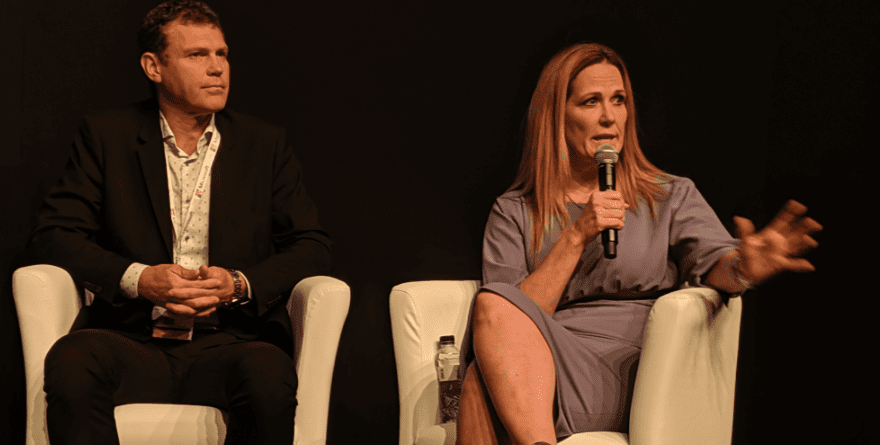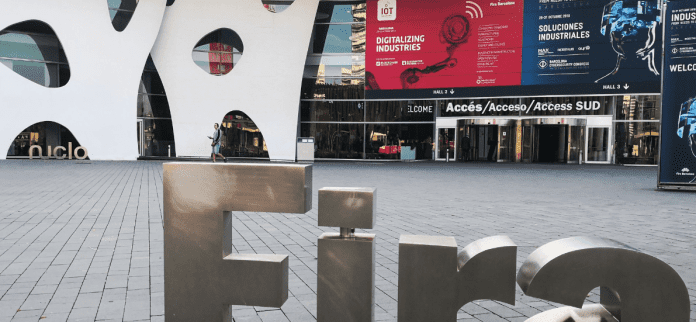What is smart infrastructure? It sounds like a silly question, almost. But the rise of new digital technologies — spearheaded by IoT, AI, and 5G, as the tools of digital change — has shifted the meaning, from telecoms poles and server racks, to physical structures and systems that prop up society, such as road furniture and energy grids, and everything between.
It was a question posed to an industry panel at IoT Solutions World Congress 2019 in Barcelona this week, by Beverly Rider, chief commercial officer at Hitachi and chair at the session. It was a decent panel, too, comprising luminaries from the likes of Sprint, Ericsson, the LoRa Alliance, and the Zigbee Alliance.
Their answers were interesting, in themselves, revealing both the shifting definitions of smart infrastructure, and also their subtly different positions in the market. Here are their responses.

Kimberly Green-Kerr, executive vice president, Sprint Business
“Smart infrastructure needs to function as a unified and interoperable network. And it needs capacity to support direct devices, like cellphones and laptops, and indirect devices, such as sensors and switches. And you need to flex and have capacity for events, planned or unplanned.
“You need a sustainable long-term network for that. Think of Curiosity IoT — we have a distributed, dedicated, virtualised operating system for IoT, specifically. Literally, our traffic is divide in the core, so you have the consumer traffic and you have the IoT traffic.
“Part of why we are doing that is that, instead of best-effort types of use cases, you have command and control. That’s one example of how we are looking at IoT, what is happening in the industry, and how we are pivoting to support that.”
Bo Ribbing, strategic programme director for IoT at Ericsson
“My understanding of infrastructure has changed over my career. It started by meaning base stations, switches, towers, concrete, and transmission for the mobile networks. Now, moving into IoT, we see the infrastructure of society becoming the infrastructure.
“Now what’s happened is the mobile networks have become the infrastructure of that infrastructure. That’s where we connect the roads and electricity networks and what-have-you into these smart networks we are building.
“Which places new requirements on these networks to be more intelligent than just a mobile network — the capability to distribute intelligence to the edges of the network, and bringing the network and intelligence to the data.
“That’s what we are working on now. And that’s where 5G comes in, naturally, as it is the first standard with IoT use use cases in mind — from massive IoT, with tens of thousands of devices within a cell site, to the critical IoT, which will enable things like smart driving and smart infrastructure for manufacturing and so on.”
Charles Paumelle, co-chair for marketing at the LoRa Alliance
“When I think of smart infrastructure, I think of three buckets. And maybe that’s my simplification, because I didn’t grow up in telecoms. But I see a whole world out there of people building sensors and actuators — the things at the heart of the ‘internet of things’.
“There is a key part, which is the connectivity, and there are multiple options for different use cases. And then you have the data management side, which is the key for getting value. Because none of this matters unless we get meaningful insights out of the infrastructure.
“As the LoRa Alliance, we represent everyone from those doing the silicon to those making the sensors, to network operators, both public and private, and people running the application layer. And that is the only way to get a complete end-to-end infrastructure in place, to have these expertise come together.”
Tobin Richardson, president at Zigbee Alliance
“If you look back at the early days of Zigbee Alliance, our infrastructure consisted really of all the lights here, say, some controllers, some mesh network, and a control desk, which is the lighting itself, with radios inside each one, with some local controller on the outside. So that’s infrastructure for this room.
“And we look to support that with the appropriate systems and technologies, to be fairly limited in terms of the power, packet size, and things like that — and that really defined what you could do with that. And as we have come along the way over the last 10 years, we still want to support that, but we also want an ability to tap into that data stream, be able to pull that out, so we are looking at different gateways.
“So we start to see this buildup, from the bottom-up, of discrete sensors and local networks that have the ability to tie back into some local system. So the point about the ecosystem is we need folks who are really good at embedded systems, which are very lightweight, but also have the ability to pull the data out in a common way.
“And that’s also what has led us to this common language, and the ecosystem is critical for that — with different devices all over the place, it is really important to come up with an ecosystem to make a good infrastructure for all of it.”

